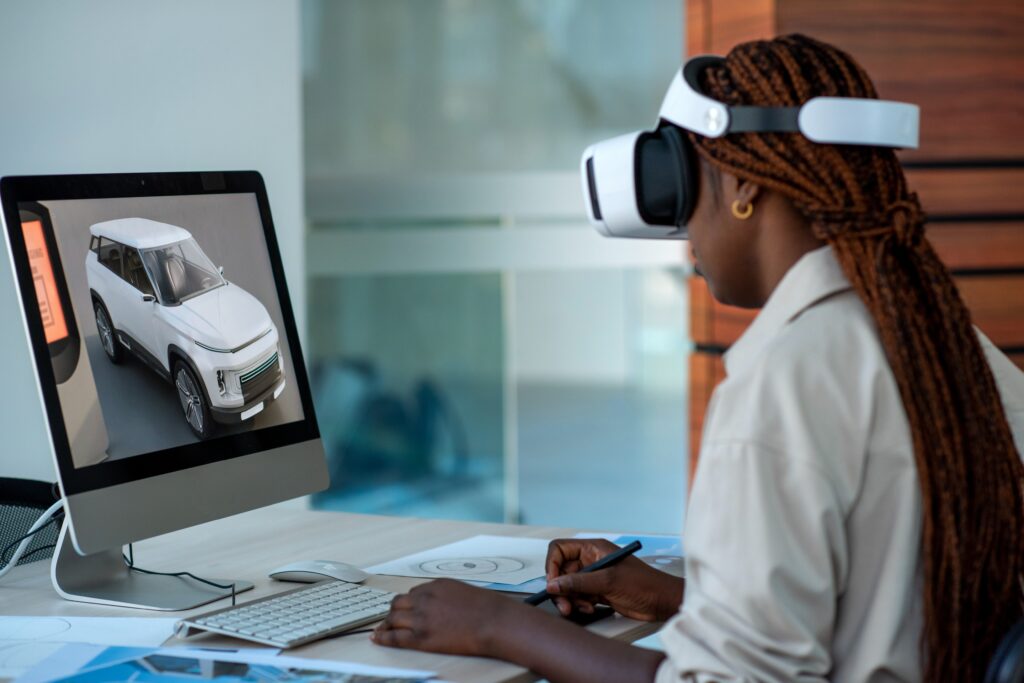Autonomous software systems represent one of the most transformative technological advancements of our time. Unlike traditional software that requires explicit human input, these systems operate independently, making decisions, learning from data, and improving over time. They are powered by artificial intelligence (AI), machine learning (ML), robotics, and advanced algorithms that enable them to perform complex tasks with minimal human oversight.

From self-driving cars navigating city streets to AI-driven medical diagnostics detecting diseases faster than human doctors, autonomous systems are reshaping industries. Businesses leveraging this technology gain efficiency, reduce operational costs, and unlock new capabilities that were previously unimaginable. However, their rapid adoption also raises critical questions about security, ethics, and regulation.
This article provides an in-depth exploration of autonomous software systems—how they function, their real-world applications, challenges, and what the future holds. Whether you’re a tech enthusiast, business leader, or policymaker, understanding these systems is crucial for staying ahead in an increasingly automated world.
How Autonomous Software Systems Work: Breaking Down the Technology
Autonomous software systems rely on a combination of hardware and software components working in harmony. Their ability to function independently is built on several key technologies:
1. Data Acquisition and Sensing
Before an autonomous system can make decisions, it must gather data from its environment. This is achieved through:
- Sensors (LiDAR, radar, cameras, infrared) – Used in autonomous vehicles to detect obstacles, pedestrians, and road conditions.
- IoT Devices – Smart factories use IoT sensors to monitor equipment performance in real time.
- User Inputs – Chatbots and virtual assistants analyze text or voice commands to respond appropriately.
2. Data Processing and Machine Learning
Raw data alone is useless without interpretation. Autonomous systems use:
- Machine Learning Models – Supervised, unsupervised, and reinforcement learning help systems recognize patterns.
- Neural Networks – Deep learning enables image recognition, natural language processing (NLP), and predictive analytics.
- Real-Time Analytics – Systems process streaming data instantly (e.g., fraud detection in banking).
3. Decision-Making Algorithms
Once data is processed, the system must decide on an action. This involves:
- Rule-Based Systems – Predefined “if-then” logic for structured tasks.
- Probabilistic Models – AI calculates the best possible action based on likelihood (e.g., self-driving cars choosing the safest route).
- Reinforcement Learning – Systems improve through trial and error (e.g., robotic arms optimizing assembly line movements).
4. Execution and Feedback Loops
After making a decision, the system acts:
- Robotic Actuators – Industrial robots adjust movements based on sensor feedback.
- Automated Responses – Customer service bots provide instant solutions.
- Continuous Learning – Systems refine performance over time, reducing errors.
This entire process happens in milliseconds, enabling seamless automation across industries.
Current Applications of Autonomous Software Systems
Autonomous systems are no longer futuristic concepts—they are already revolutionizing multiple sectors. Below are some of the most impactful applications today.
1. Autonomous Vehicles and Transportation
- Self-Driving Cars (Tesla, Waymo, Cruise) – Use AI to navigate, avoid collisions, and optimize routes.
- Delivery Drones (Amazon Prime Air, Wing by Alphabet) – Automate last-mile logistics.
- Autonomous Ships & Trucks – Companies like Rolls-Royce and TuSimple are testing unmanned freight transport.
2. Healthcare and Medical Diagnostics
- AI-Powered Diagnostics (IBM Watson, Google DeepMind) – Detect diseases from medical scans faster than human doctors.
- Robotic Surgery (da Vinci Surgical System) – Perform precise, minimally invasive procedures.
- Drug Discovery – AI accelerates pharmaceutical research by predicting molecular interactions.
3. Smart Manufacturing and Industry 4.0
- Predictive Maintenance – AI detects equipment failures before they occur.
- Autonomous Robotics – Factories use robots for assembly, welding, and packaging.
- Supply Chain Optimization – AI forecasts demand and automates inventory management.
4. Finance and Fraud Detection
- Algorithmic Trading – AI executes high-frequency trades in milliseconds.
- Credit Scoring – Machine learning assesses borrower risk more accurately.
- Fraud Prevention (PayPal, Mastercard) – Real-time anomaly detection stops fraudulent transactions.
5. Customer Service and Virtual Assistants
- AI Chatbots (Zendesk, Intercom) – Handle customer inquiries 24/7.
- Voice Assistants (Siri, Alexa) – Use NLP to understand and respond to commands.
- Sentiment Analysis – AI gauges customer emotions to improve service.
These applications demonstrate how autonomy is already embedded in our daily lives—often without us realizing it.
Challenges and Limitations of Autonomous Systems
Despite their potential, autonomous software systems face significant hurdles that must be addressed for broader adoption.
1. Cybersecurity Risks
- Hacking Vulnerabilities – Autonomous vehicles and medical devices can be hijacked.
- Data Privacy Concerns – AI systems process vast amounts of sensitive information.
- Adversarial Attacks – Hackers manipulate AI by feeding it deceptive data.
2. Ethical and Moral Dilemmas
- Decision-Making in Critical Situations – Should a self-driving car prioritize passenger safety or pedestrians?
- Bias in AI – Machine learning models can inherit human prejudices from training data.
- Accountability – Who is responsible when an autonomous system fails?
3. Regulatory and Legal Challenges
- Lack of Standardized Laws – Governments struggle to keep up with AI advancements.
- Liability Issues – Legal frameworks must define responsibility in accidents involving AI.
- Global Discrepancies – Different countries have conflicting AI regulations.
4. High Development and Maintenance Costs
- R&D Expenses – Building reliable autonomous systems requires massive investment.
- Infrastructure Requirements – Edge computing, 5G, and IoT integration add complexity.
- Ongoing Training – AI models need continuous updates to stay effective.
5. Public Trust and Adoption Barriers
- Fear of Job Loss – Many workers worry AI will replace human roles.
- Skepticism About Reliability – High-profile failures (e.g., Tesla autopilot crashes) fuel distrust.
- Resistance to Change – Businesses hesitate to overhaul legacy systems.
Addressing these challenges will require collaboration between technologists, policymakers, and ethicists.
The Future of Autonomous Software Systems: Trends and Predictions
The next decade will bring even more sophisticated autonomy. Here’s what to expect.
1. Hyper-Automation and AI Integration
- AI + IoT + Robotics – Fully automated smart cities and factories.
- Autonomous Business Processes – End-to-end automation in finance, HR, and logistics.
2. Edge AI and Decentralized Processing
- Faster Decision-Making – AI processes data locally (on devices) instead of in the cloud.
- Reduced Latency – Critical for autonomous drones and medical robots.
3. Human-AI Collaboration (Not Replacement)
- Cobots (Collaborative Robots) – Work alongside humans in manufacturing.
- AI-Augmented Decision-Making – Doctors use AI for diagnostics but retain final authority.
4. Ethical AI and Transparent Systems
- Explainable AI (XAI) – Making AI decisions understandable to humans.
- Bias Mitigation – Fairer algorithms in hiring, lending, and law enforcement.
5. Autonomous Systems in New Industries
- Agriculture – AI-driven tractors and crop monitoring.
- Space Exploration – Autonomous rovers and satellite maintenance.
- Energy Management – Smart grids optimize electricity distribution.
The future is not just about automation—it’s about intelligent, adaptive, and responsible autonomy.
FAQs on Autonomous Software Systems
Q: How do autonomous systems differ from traditional automation?
A: Traditional automation follows fixed rules, while autonomous systems learn, adapt, and make decisions independently.
Q: Can autonomous systems operate without human oversight?
A: Some can (e.g., self-driving taxis), but most still require human monitoring for safety.
Q: What industries will benefit most from autonomous technology?
A: Healthcare, logistics, manufacturing, finance, and transportation will see the biggest impact.
Q: Are autonomous systems prone to errors?
A: Yes, but machine learning helps them improve over time. Failures are rare but can be catastrophic.
Q: Will AI take over human jobs?
A: It will replace repetitive tasks but create new roles in AI maintenance, ethics, and oversight.
Q: How secure are autonomous systems from hacking?
A: They are vulnerable but improving with advanced encryption and cybersecurity measures.
Conclusion
Autonomous software systems are not just a technological evolution—they are a revolution. From self-driving cars to AI-powered healthcare, these systems are reshaping industries, improving efficiency, and solving complex problems. However, challenges like cybersecurity, ethics, and regulation must be addressed to ensure safe and equitable adoption.
The future belongs to those who embrace intelligent automation. Businesses, governments, and individuals must prepare for a world where machines make decisions—not just follow instructions. The question is no longer if autonomous systems will dominate, but how we will adapt to this new reality.

